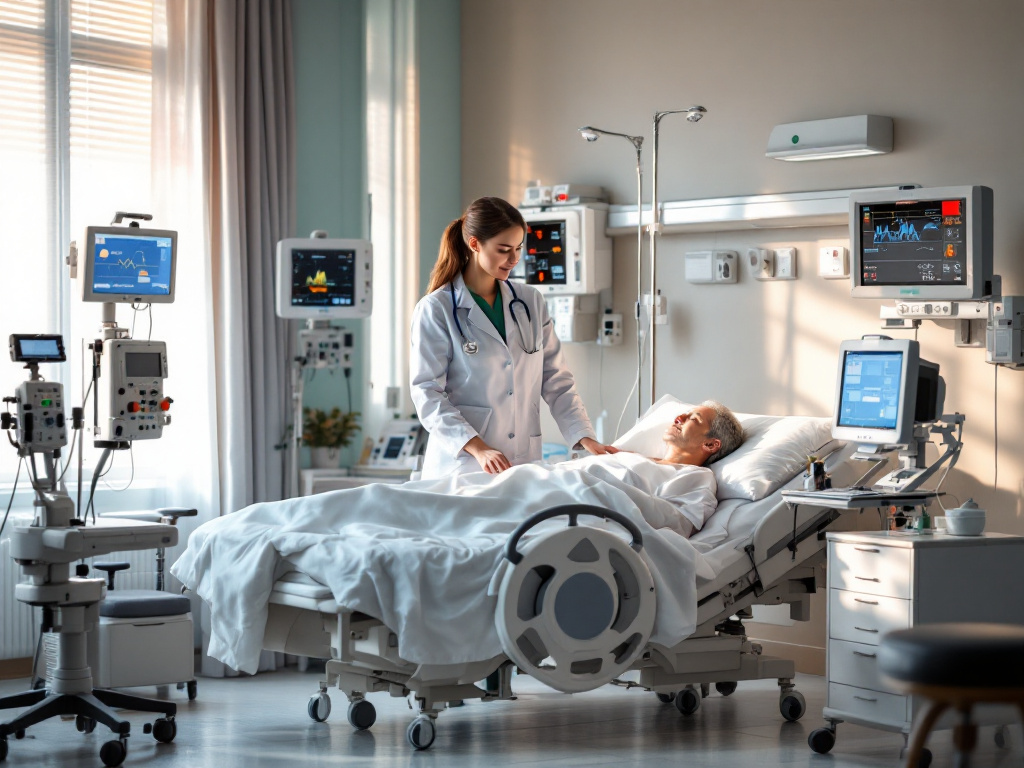Inpatient recovery overview
You’ve completed detox and you’re ready for the next phase of your healing journey. Inpatient recovery with medical monitoring offers an immersive residential rehab setting where you live on-site and receive 24/7 clinical oversight. Unlike outpatient or intensive outpatient programs, inpatient recovery allows you to focus entirely on your recovery, free from external triggers and distractions. At a facility like Kemah Palms—a luxury residential rehab program that integrates evidence-based therapy and holistic healing—you’ll benefit from structured routines, personalized treatment plans, and continuous monitoring by medical professionals.
Role of medical monitoring
Medical monitoring is the backbone of safe and effective inpatient recovery. It includes regular assessment of your vital signs, medication management, withdrawal supervision, and coordination of care among therapists, physicians, and nurses. With expert oversight, complications such as severe withdrawal symptoms or co-occurring medical issues can be identified and addressed immediately.
Enhanced monitoring technology
- Vital sign tracking: routine blood pressure, heart rate, respiratory rate checks
- Laboratory testing: periodic bloodwork and urine toxicology screening to confirm abstinence
- Remote patient monitoring devices: Bluetooth scales, glucometers, pulse oximeters and ECG tools to track trends in your health [1]
Clinical outcomes under monitoring
A meta-analysis of healthcare professionals in substance use monitoring programs found a 72% abstinence rate and 77% work retention rate among participants [2]. Studies that began monitoring after treatment completion saw even higher abstinence rates (79%) compared to those that started at treatment initiation (61%)
Medical monitoring process
Your inpatient recovery with medical monitoring typically follows a clear protocol from day one through discharge. Understanding each phase can help you know what to expect and how to engage fully in your care.
Initial assessments
During your first week, clinicians conduct thorough evaluations to tailor your treatment safely:
- Physical exam and lab work to assess overall health
- Mental health screening to identify any co-occurring disorders
- Substance use history and risk assessment for possible withdrawal complications [3]
Daily health checks
Each day begins with routine vital sign monitoring and medication review. You’ll meet with nursing staff to discuss any new symptoms or side effects, ensuring adjustments are made promptly.
Toxicology screening
Regular urine toxicology or breathalyzer tests confirm ongoing abstinence. This objective data reinforces accountability and helps your care team refine your plan.
Benefits of medical monitoring
Continuous clinical oversight yields multiple advantages for your recovery journey:
- Improved safety: early detection and management of withdrawal crises and medical emergencies
- Higher treatment completion: structured support reduces drop-out rates—fewer than 43% of individuals complete recommended plans without comprehensive monitoring [4]
- Reduced relapse risk: relapse rates for substance use mirror those of chronic diseases like hypertension (40–60%) but drop significantly with close medical supervision [4]
- Enhanced confidence: knowing that you’re monitored by skilled professionals lets you concentrate on therapy and self-reflection
Integrating evidence-based therapies
Medical monitoring pairs seamlessly with proven therapeutic modalities to address the psychological and behavioral aspects of addiction.
Individual and group therapy
- One-on-one counseling allows you to explore personal history and triggers [5]
- Group sessions foster peer support and accountability [6]
Cognitive behavioral therapy
CBT helps you identify negative thought patterns that fuel substance use and replace them with healthier coping strategies. This approach reduces relapse by equipping you with concrete tools for stress management.
Family involvement
Family therapy can heal relationship rifts and build a strong support network for long-term recovery [7]. Involving loved ones in certain sessions ensures you return home to an environment that understands and sustains your progress.
Holistic healing approaches
Inpatient recovery with medical monitoring at Kemah Palms isn’t limited to clinical treatments. Holistic modalities enhance emotional, spiritual, and physical well-being:
- Mindfulness and meditation classes to improve stress resilience
- Yoga and gentle movement therapy for body-mind connection
- Nutritional counseling and chef-prepared meals to restore health
- Art therapy, equine interaction, or music therapy for creative expression
Your program can integrate these options seamlessly alongside evidence-based treatments. Explore more about holistic options at residential rehab with holistic therapies.
Choosing Kemah Palms rehab
When selecting an inpatient facility, consider how medical monitoring, therapy offerings, amenities, and accreditation align with your needs. Kemah Palms stands out as a luxury inpatient rehab facility that balances clinical excellence with comfort.
Key features at Kemah Palms:
- 24/7 on-site medical staff and private nursing suites
- Personalized medication management and withdrawal supervision
- Therapeutic options for co-occurring disorders [8]
- Trauma-informed care and optional faith-based residential rehab tracks [9]
- Private residential addiction program with spacious accommodations [10]
- Comprehensive relapse prevention planning [11]
- Concierge support for insurance coordination, travel, and family liaison
For a detailed look at luxury rehab benefits, see our luxury residential rehab program overview.
Preparing for your stay
A smooth admission sets the tone for your recovery. Here’s how to get ready:
- Verify insurance coverage and explore insurance covered inpatient rehab options
- Pack comfortable clothing, slippers, toiletries, and personal items (books, journals, photos)
- Gather any court documents, medical records, and medication lists
- Notify family and friends about facility visitation policies and schedule
- Prepare emotionally by reviewing your goals and discussing expectations with your care team
Remember, your focus is on healing. Leave work laptops, non-essential electronics, and outside distractions at home.
Conclusion
Inpatient recovery with medical monitoring provides the most comprehensive care for those seeking immersive residential rehab after detox. By combining continuous clinical oversight, evidence-based therapies, holistic healing, and luxury amenities, you position yourself for a strong start to long-term sobriety. Whether you’re navigating co-occurring disorders, addressing deep-seated trauma, or simply needing a structured environment away from external triggers, a facility like Kemah Palms can guide you toward lasting change. Explore your options and take the next step in your recovery journey today.
References
- (Health Recovery Solutions)
- (Journal of Clinical Medicine)
- (Evoke Wellness)
- (American Addiction Centers)
- (individual therapy for addiction recovery)
- (group therapy in residential rehab)
- (family therapy residential treatment)
- (dual diagnosis residential treatment)
- (trauma-informed residential therapy, faith-based residential rehab)
- (private residential addiction program)
- (residential relapse prevention plan)







